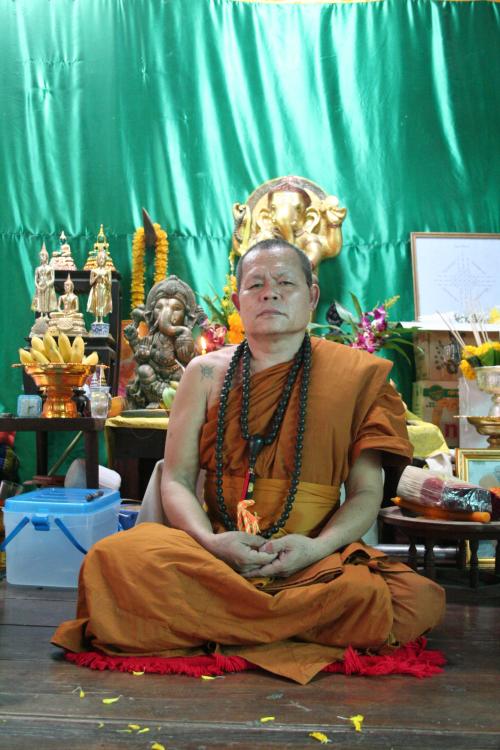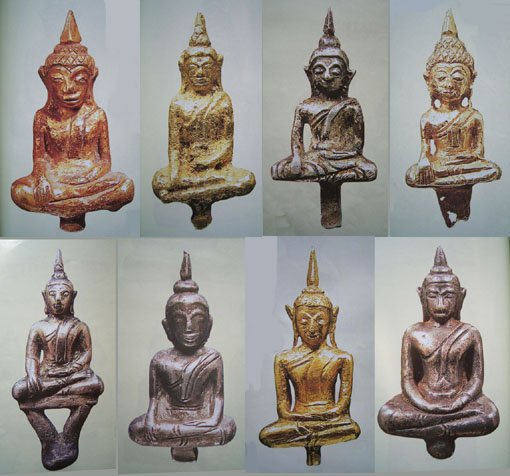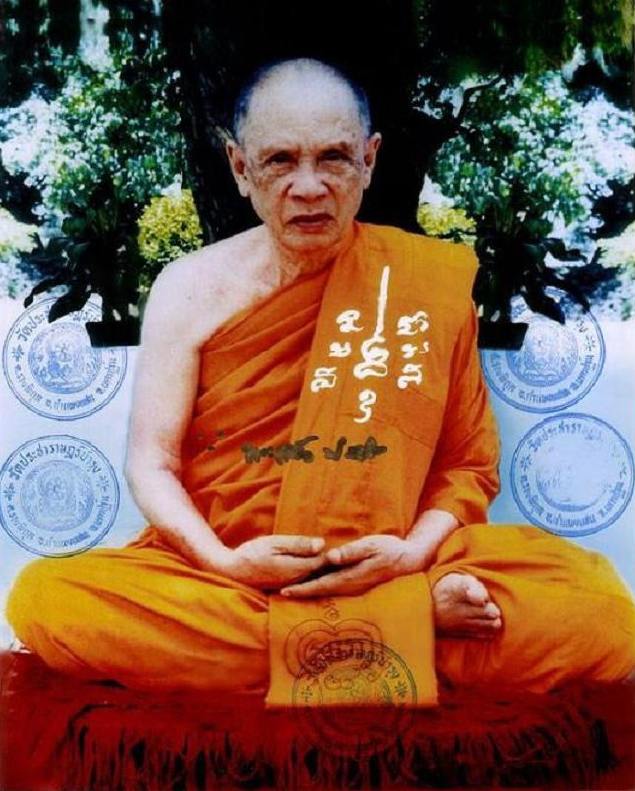Welcome to our store Uncle Chow Amulet Gallery
Archives
Biography – Luang Pu Waen (Wat Doi Mae Phang)

What is sacred? Everyone has something sacred within themselves. To have been born as a complete human being is already sacred. One can be sacred only from within oneself, and not by any amulet or other so-called sacred objects. Dhamma is sacred, and to have this sacredness, one must have Dhamma within oneself.
About LP Waen – Wat Doi Mae Phang (Chiang Mai)
As a very popular monk, Luang Pu Waen Sujinno was often believed to have ‘sacred amulets’, something which Thais from all walks of life like to receive from respectable monks, for their protective value. People from all over Thailand would often travel to Wat Doi Mae Pang to seek these amulets or other sacred objects from Luang Pu and he would always give the same answer as the one quoted above.
Luang Pu Waen Sujinno was born on the 16th of February B.E.2426 (1883) in Tambon Na Pong, Muang District of Loei to a blacksmith’s family. He was named Yarn and had one elder sister. He ordained as a novice monk in 1892 at Wat Bodhi Chai in Na Pong at the age of nine to fulfill the wish of his mother, when she died, while he was five years old. He studied with a number of teachers and later ordained as a monk at a temple in Hua Taparn District of Ubon Ratchathani at the age of 21.
Among the many teachers he studied with was Ajahn Mun Bhuridhatta Maha Thera in Udon Thani, who taught him the virtues of the pursuance of a secluded life and the practice of meditation and Dhamma in the jungles. Subsequently, Luang Pu travelled widely in the Northeast of Thailand in search of isolated places where he could meditate. His travels also took him to Bangkok where he met Chao Khun Phra Upali Gunupamacariya of Wat Bovoranives in 1921 with whom Luang Pu Waen spent several years studying and practising the Dhamma. Later, Chao Khun Phra Upali took him to Wat Chedi Luang in Chiang Mai where Luang Pu Waen decided to make a switch from the Maha Nikaya sect of Thai Theravada Buddhism to the stricter Dhammayutika Nikaya sect.
Luang Pu Waen travelled extensively by foot through thick jungles and remote mountains and even ventured to Myanmar and India where he paid homage at several historic sacred Buddhist sites. In the year of 1955, news of a foot injury sustained during his stay in seclusion at Wat Paa Ban Pong in Mae Taeng District, Chiang Mai, reached Phra Ajahn Noo Suchitto of Wat Doi Mae Pang, who later arranged for Luang Pu Waen to stay in Wat Doi Mae Pang permanently. Wat Doi Mae Pang then became the residence of Luang Pu Waen until his passing away in B.E.2528 (1985). Even then, Luang Pu did not reside in the monastery itself, but in a secluded hut a short distance away from the actual monastery.
Luang Pu Waen began consecrating amulets and sacred images for people after settling down in Wat Doi Mae Pang. Luang Pu’s amulets and sacred images were all consecrated for meritorious purposes, like raising funds for charitable organisations and hospitals. Many of his pendants were also specially created and distributed to armed forces personnel for their protection. Many devotees also started having miraculous experiences with him and his amulets then, the most famous one, which was also mentioned in the Asia Magazine, being the incident of him being spotted floating in the sky by an airforce pilot. Please read the full magazine article from the Asia Magazine via the link below:
Luang Pu Waen Sujinno was also widely rumoured to possess the mystical power to float in the air, to cure illness and to energize amulets that protected the wearer from bullets and knives. General Kriangsak Chamanand, supreme commander of the armed forces, in 1979 gave Thai soldiers amulets of Luang Pu Waen to protect them against what he described as Thailand’s greatest enemy at that time, the Communist Party. The King in 1978 sponsored a medallion with the images of Luang Pu Waen Sujinno and the royal crown which was sold to pay for the construction of several hospitals. The popular amulets were distributed through large banks and businesses and raised millions of baht.
On the 15th of April 1985, Luang Pu Waen was found to be unable to eat or move and was admitted into the Maharaj Hospital. He was operated on 4th of June 1985 in order to insert a tube into his stomach through which he would be fed. However, various complications developed and Phra Ajaan Noo, the abbot of Wat Doi Mae Pang, requested doctors not to perform any more operations as he wanted Luang Pu to rest peacefully. His request was granted by doctors and the Governor of Chiang Mai, Mr. Chaiya Punsiriwong.
On the 2nd of July B.E.2528 (1985) at 9.54pm, Luang Pu Waen finally passed away after having been in the monkhood for almost 90 years. He was given a royally-sponsored bathing ceremony at Sala Ang Klaew in Chiang Mai University which was attended by the King and Queen of Thailand as well as the general public. The staff of the Maharaj Hospital in Chiang Mai observed three minutes of silence as a mark of respect for Luang Pu in a memorial service. Plenty of pictures were taken by reporters for news reports. Many people were amazed when the pictures were developed, as what seemed like images of Luang Pu had appeared miraculously on many of the pictures taken on that day.
Luang Pu’s sacred remains were kept in Wat Doi Mae Pang for about year for devotees to pay their last respects. The remains were cremated at a Royal Funeral on 16 January 1986. The cremation was attended by the King and Queen of Thailand, the Prime Minister and half a million devotees. Just as the sacred fire was consuming the remains of Luang Pu amidst the chanting of monks and devotees, the image of Luang Pu Waen miraculously manifested within the flames upon the funeral pyre. This incident was witnessed my many devotees and was well-documented in many magazines and books about Luang Pu.
Subsequently, the remains of Luang Pu transformed into smooth grains like sand and glass shortly after the cremation, leading many people to strongly believe that Luang Pu had attained the state of an Arahant. However, despite much attention given to the miracles related to Luang Pu, there is no doubt that what Luang Pu would have wanted us to remember about him would be his legacy of pure Dhamma practice.


